set with 33% randomly blanked traces.
From this cube we extract examples for training in a restricted area. The trained model is
applied to the entire volume, whereby the area from which no examples are extracted acts as
blind test area. The real value is of course when we apply the trained model to an area with
real missing traces (which we don’t have in this case). Random blanking (replacing the values
with hard zeros) is done in OpendTect’sAttribute engine and can be done in different ways. In
this case, we will create an attribute set to perform the following tasks:
1. Math attribute with formula: “randg(1)”. This generates random values with a Gaussian
distribution and 1 standard deviation;
2. Apply this attribute to a horizon and save as horizon data;
3. Horizon attribute that retrieves the random values from the saved horizon data. A Horizon
attribute replaces a value at an inline, crossline position with the value extracted from the
given horizon;
4. Math attribute with formula: “abs(value)> 1 ? 0: seis”. We assign the retrieved horizon data
to the variable “value” and the seismic data to “seis”. This attribute assigns values larger
than the absolute value of 1 standard deviation to zero while all other values are given the
value of the seismic data.
5. Additional attributes in the set are used to compare/QCresults before and after prediction.



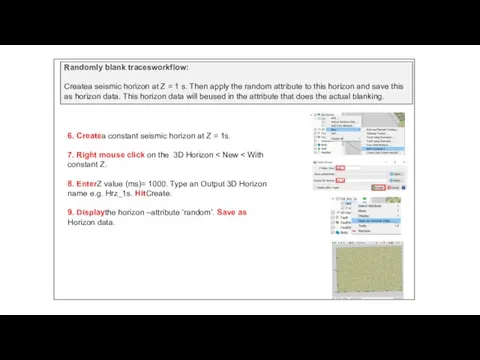
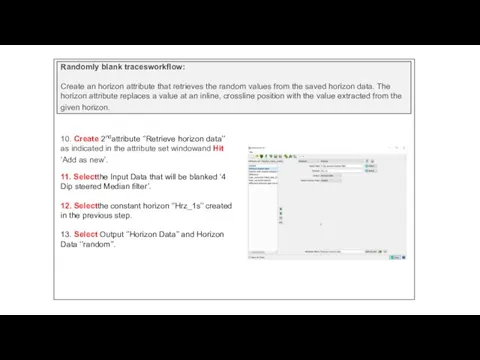
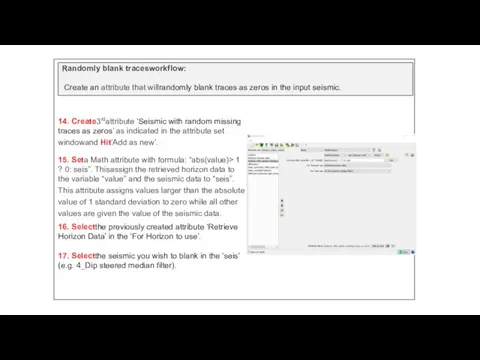
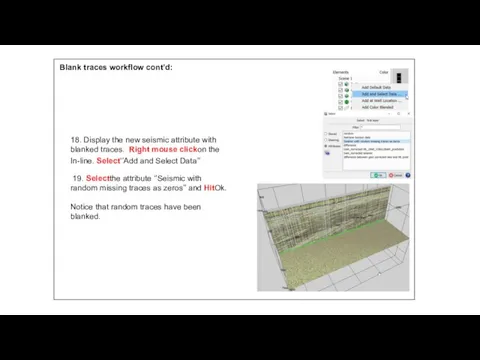
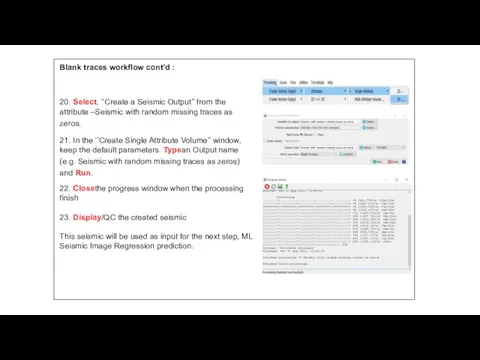
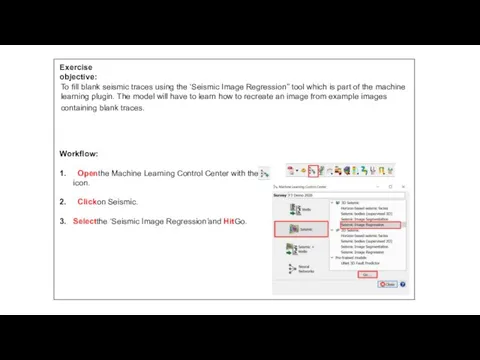
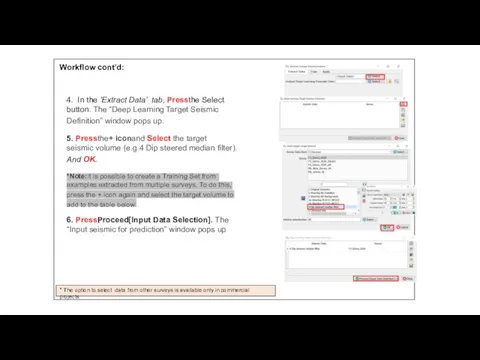
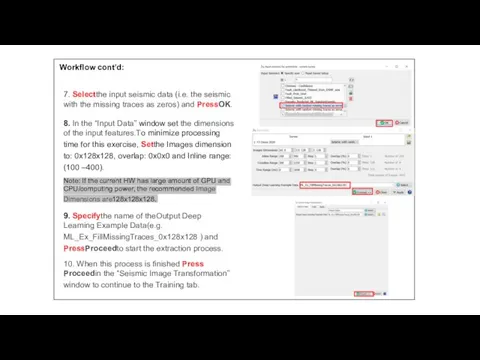
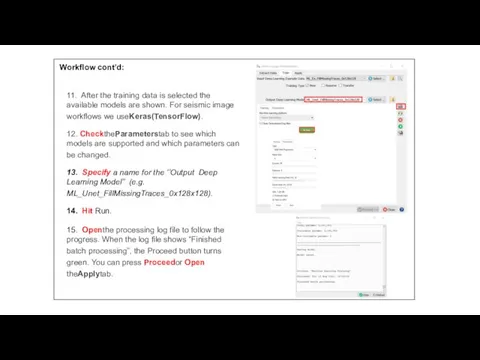
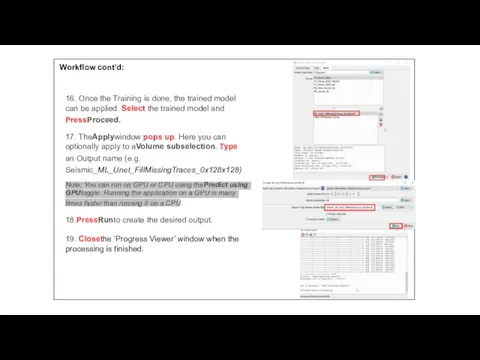
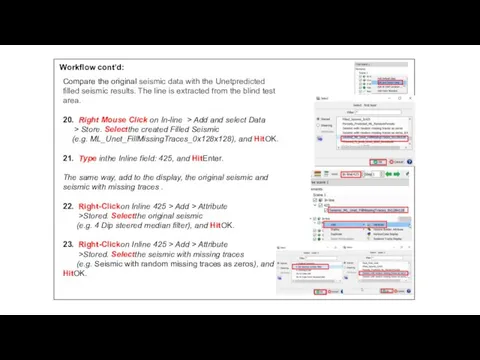
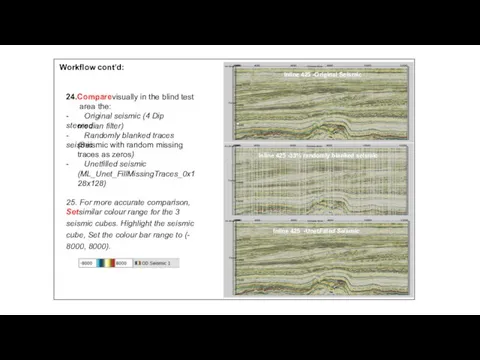
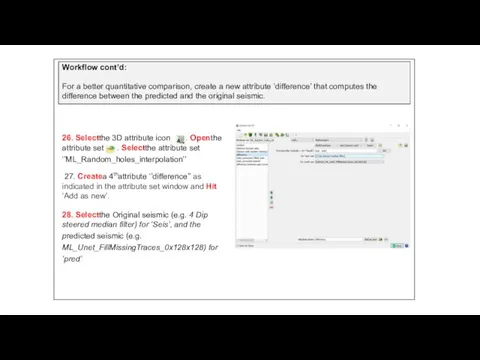
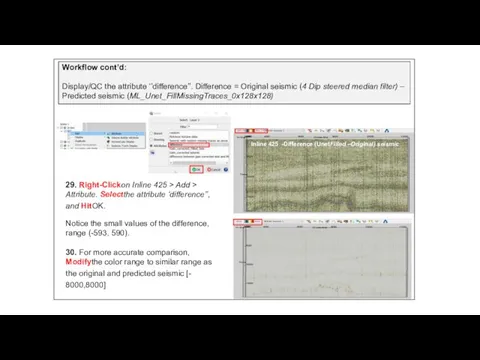
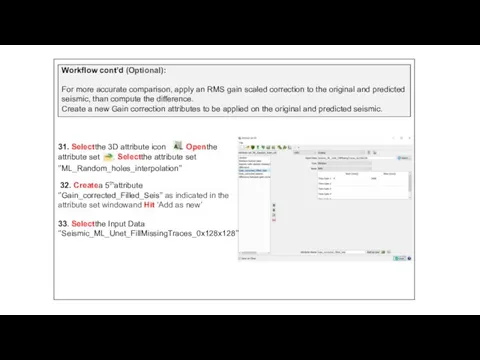
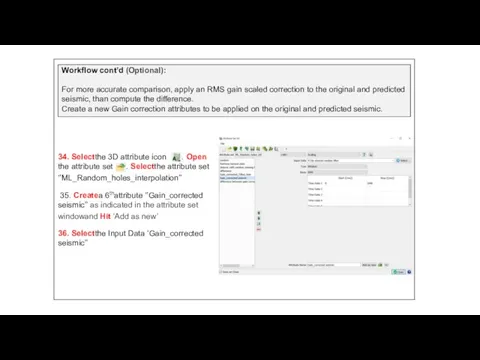
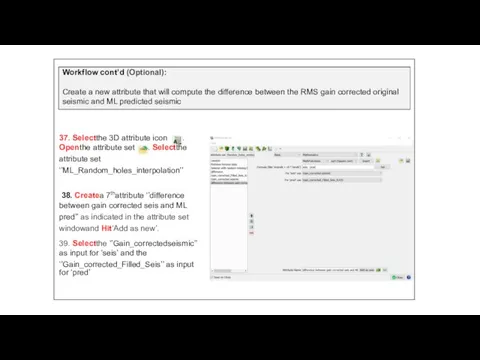
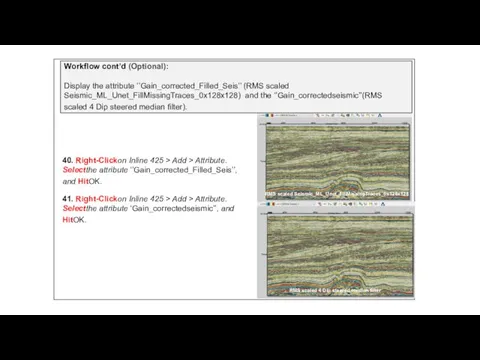
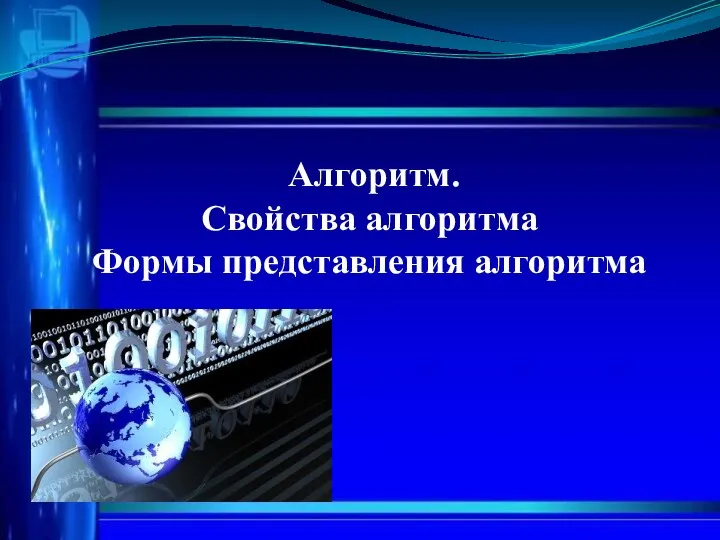 Алгоритм, Свойства алгоритма. Формы представления алгоритма
Алгоритм, Свойства алгоритма. Формы представления алгоритма Үткен каләм + үткер күз = асыл сүз
Үткен каләм + үткер күз = асыл сүз 358278
358278 доклад Фёдоров ИВ
доклад Фёдоров ИВ Библиотечные функции. Синтаксис использования функции в программе: the_root = sqrt(9.0)
Библиотечные функции. Синтаксис использования функции в программе: the_root = sqrt(9.0) Программирование на алгоритмическом языке
Программирование на алгоритмическом языке Fundamental concepts of computer networks (chapter 1)
Fundamental concepts of computer networks (chapter 1) Тренируемся в определении перьев птиц с использованием on-line определителя
Тренируемся в определении перьев птиц с использованием on-line определителя Разрешение экрана
Разрешение экрана Структура сайта. Сайт-визитка
Структура сайта. Сайт-визитка Роль рекламы в интернете
Роль рекламы в интернете Технология работы с инфоповодами
Технология работы с инфоповодами Сведения о языке программирования Паскаль
Сведения о языке программирования Паскаль Способы и стили заливки фигур
Способы и стили заливки фигур Какая бывает информация?
Какая бывает информация? История развития информационных технологий. Этапы развития информационных технологий
История развития информационных технологий. Этапы развития информационных технологий Программирование автоматики
Программирование автоматики Разработка автоматизированной информационной оказывающего услуги по ремонту автомобилей
Разработка автоматизированной информационной оказывающего услуги по ремонту автомобилей Алгоритм. Использование LEGO-WеDо как исполнителя
Алгоритм. Использование LEGO-WеDо как исполнителя Мячик детский. Иллюстрация векторная
Мячик детский. Иллюстрация векторная Балаболку скачать из интернета (если нужно)
Балаболку скачать из интернета (если нужно) Warsztat kreatywny. Projekt
Warsztat kreatywny. Projekt Установка специальных средств управления сетевыми устройствами
Установка специальных средств управления сетевыми устройствами Что такое пиксель
Что такое пиксель TesLab. Автоматизация лабораторной деятельности
TesLab. Автоматизация лабораторной деятельности Работа с существующими глобалами через объекты и SQL Вадим Федоров InterSystems Corporation
Работа с существующими глобалами через объекты и SQL Вадим Федоров InterSystems Corporation Восприятие картографической информации
Восприятие картографической информации Средства анализа и визуализации данных. Обработка числовой информации в электронных таблицах
Средства анализа и визуализации данных. Обработка числовой информации в электронных таблицах